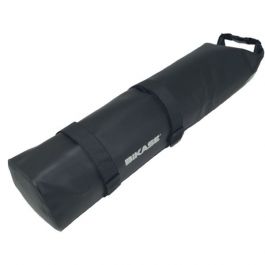Pouch cells can explode because they don't have built-in anti explosion device and there is no air gaps between the pouches. When a cell is shorted, it will short adjacent cells and set off an explosion.
Cylindrical cells have anti explosion, steel jackets and placed inside plastic separators. They burn individually, give a lot of smoke and heat but not much fire and don't explode.
Don't buy batteries built with cheap pouch cells.
The bag battery is more susceptible to water damage than traditional plastic casings but the fire risk is the same.
From 2007 the Panasonic powered pedelec batteries used in their own e-bikes in Japan and Taiwan, plus several Derby Cycles gmbh brands on two continents and BikeTec's internationally highly respected Flyer models used pouch cells over many years.
At a time when other lithium batteries often using metal cased cells struggled to get past two years and some caught fire, these Panasonic batteries often lasted beyond five years of daily commutes, making them the best and safest batteries in use on pedelecs for well over a decade.
To which I could add that the safest and longest lived e-car batteries used in Nissan's Leaf series have tightly packed rectangular cells. So I disagree about cells without air spacing since they are well proven to be safe in well designed batteries, which have outperformed air spaced cylindrical cell batteries in both safety and longevity.
So pouch cells and air spacing are irrelevancies. The only thing that matters is the quality of cell and battery design, well proven by Tesla's abysmal record of total burn-outs and the huge numbers of fires in laptops and the like, all using cylindrical metal cased cells with some air spacing.
.










